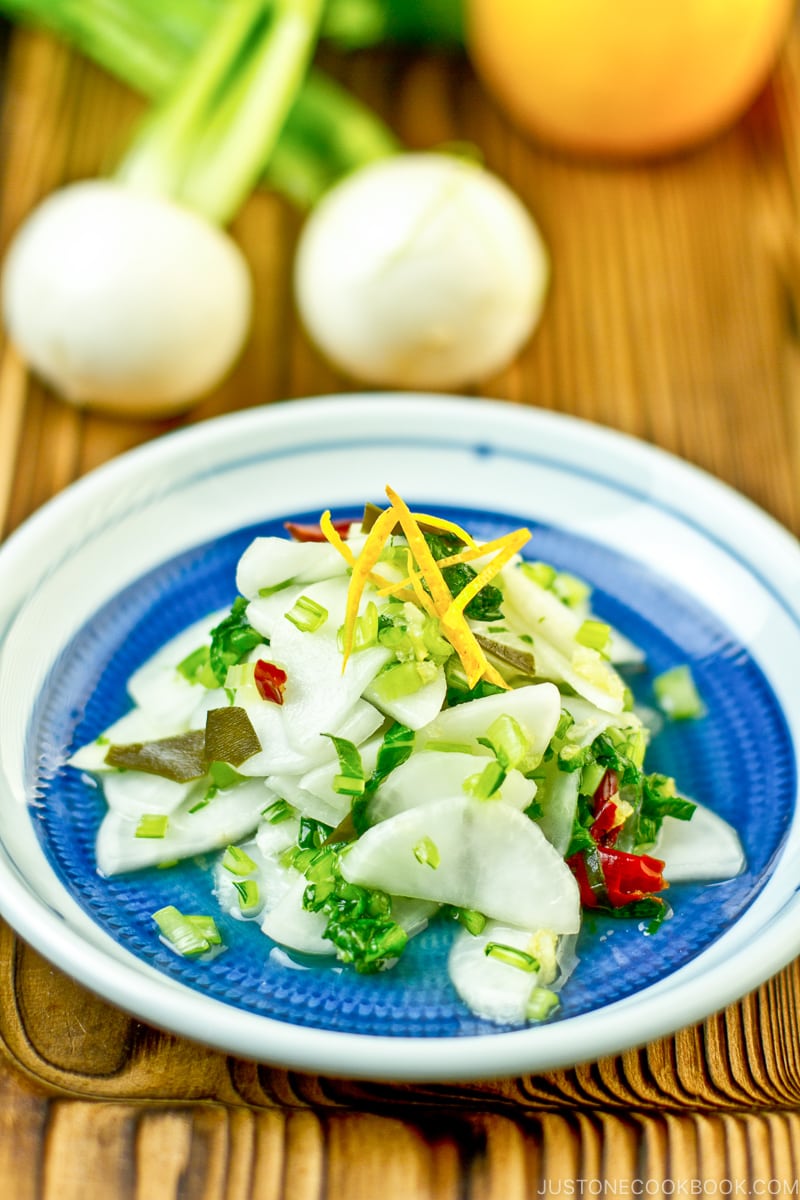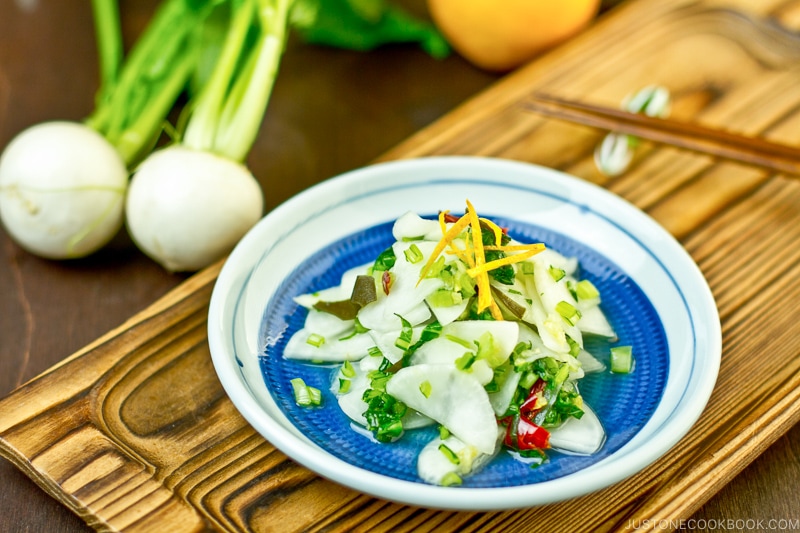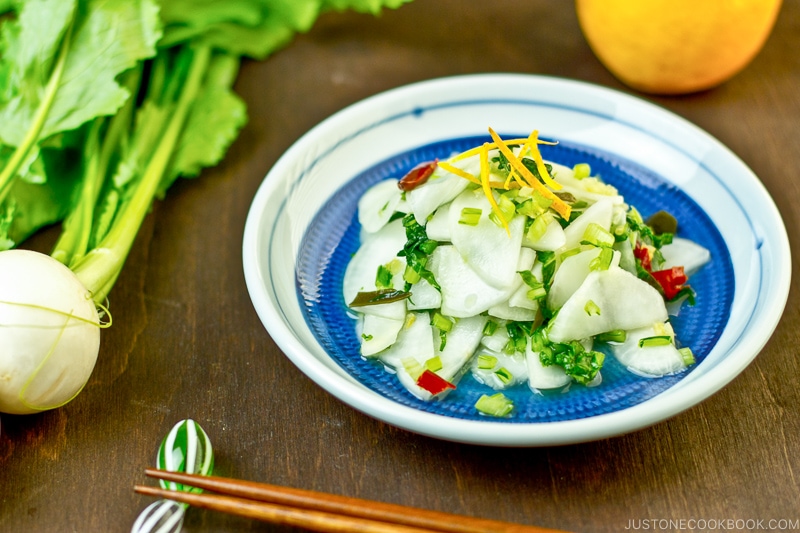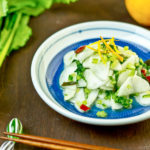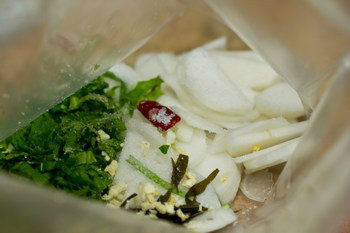I had received several requests from some of the readers that they would like to make Tsukemono, Japanese pickles. In Japan, Tsukemono is always served with steamed rice and considered as an important garnish or accompaniment for meals. There are even Tsukemono specialty stores in Japan, where we can buy all different types and varieties.
Although we call it “pickles”, Japanese pickles are actually considered “preserved vegetables”. Unlike how American pickles are prepared, Tsukemono is not pickled in distilled vinegar. For pickling the Japanese way, we use salt, soy sauce, miso, rice bran (nuka), or sake lees (sake kasu). Today I’m sharing Asazuke, a type of Tsukemono. Asazuke literary means ‘shallow pickling’ for its short period of pickling time. Asazuke is commonly prepared at home because it’s easier and simple to make as opposed to Tsukemono, which takes more effort to prepare and longer waiting period. I used Tokyo turnips called kabu as the main vegetable, but other commonly used vegetables for Tsukemono include cucumbers, daikon (Japanese radish), napa cabbage, and eggplant. This recipe calls for yuzu, a citrus fruit widely available in Japan, Korea, and China. If you cannot find yuzu in your area, you can substitute with lemon zest/juice for this recipe. There are quite a lot of Japanese dishes with yuzu flavor and one of our favorite Japanese restaurants use it on a few of the special sushi they serve. I hope you enjoy making this version of Asazuke at home!
Japanese Ingredient Substitution: If you want to look for substitutes for Japanese condiments and ingredients, click here. Wish to learn more about Japanese cooking? Sign up for our free newsletter to receive cooking tips & recipe updates! And stay in touch with me on Facebook, Pinterest, YouTube, and Instagram.
